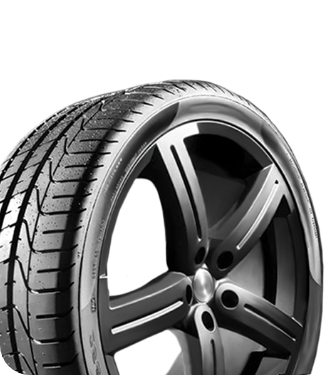

Understanding the Lifespan of Different Types of Tires
Tires |One of the most important characteristics to consider when replacing your car’s tire is its lifespan. Tires are not cheap, and drivers want to be sure they’re getting a good return on their investment when purchasing new tires; they don’t want to settle for tires that will degrade and require replacement quickly. Below, our guide will explain everything you need to understand about the lifespans of different types of tires, from general all-season tires to specialized tires.
Understanding Factors That Impact Tire Lifespan
Tire lifespan refers to the period or distance a tire can reliably serve before it needs to be replaced. The following variables contribute to the total lifespan of a tire.
Driving Habits
Your driving habits play a major factor in how long your car’s tires will last. Aggressive driving, which includes rapid acceleration and hard braking, creates excessive friction and heat, shortening tire life.
Similarly, frequent start-stops, as is seen in urban driving, lead to uneven wear patterns. Speeding increases the risk of accidents and places additional stress on tires, further contributing to their premature deterioration. Adopting smoother, more conservative driving habits can curtail rapid tire degradation.
Road Conditions
The surfaces you drive also affect tire longevity. Rough, uneven roads can accelerate wear and tear on tires due to the constant jarring and vibrations they cause.
Potholes and gravel can cause damage that might not be immediately visible but can compromise tire integrity over time. Driving on wet or icy surfaces can also heighten the risk of hydroplaning or losing traction, which can affect how quickly your tires wear down.
Maintenance
A tire’s longevity is also reliant on the owner’s care for the tires. Critical tire maintenance includes:
- Checking and adjusting tire pressure
- Scheduling tire rotations
- Checking tread depth
- Assessing tire alignment
Without these important maintenance measures, tires will degrade unevenly and more quickly.

Tread Design
To understand the lifespan of different types of tires, you must understand the characteristics of certain tread designs. For example, all-season tires typically last longer than performance tires due to their harder rubber compounds.
However, performance tires provide superior handling and grip in dry conditions, making them ideal for sports cars. Certain tread patterns are better suited to particular terrains or weather conditions, such as snow or mud.
Popular Tire Types
While there are many different types of tires you may come across, the most common are all-season, winter, summer, and high-performance tires.
All-Season Tires
All-season tires perform reasonably well under various conditions, making them a popular choice for many car owners. Typically, they can last between 50,000 and 70,000 miles, depending on usage and maintenance. For generally favorable and moderate driving conditions, all-season tires offer a solid return on investment.
Winter Tires
Winter tires are designed for use in icy and snowy conditions, providing superior grip during colder months. However, their softer rubber compounds mean they wear out faster, usually around 20,000 to 40,000 miles. To maximize their lifespan, it’s advisable to use them only in the winter months and store them during the rest of the year.
Summer Tires
Summer tires offer excellent performance on warm, dry roads but have a shorter lifespan compared to all-season options, averaging about 25,000 to 30,000 miles. They provide enhanced grip and responsiveness, making them perfect for performance enthusiasts.
High-Performance Tires
High-performance tires provide exceptional handling and speed capabilities, but they come with an even shorter lifespan, often around 15,000 to 20,000 miles. These tires are best for special vehicles like sports cars that aren’t used for daily commuting.
Recognizing When It’s Time for a Change
Identifying the signs that your tires need replacing is vital for safety and performance. One of the most telling indicators is tread depth. A tire’s tread helps maintain traction, and when it wears down to 2/32 of an inch, it’s time for a replacement.
You can test tread depth using a penny. Place the coin into the tread with Lincoln’s head facing down; if you can observe his entire head, the tread is too worn. Age is another factor that can impact tread depth. Even if the tread appears fine, you should replace tires every 6 to 10 years, as rubber degrades over time. Regular visual inspections can also reveal issues such as cracks, bulges, or uneven wear patterns, which indicate alignment problems or other issues.

Prolonging the Life of Your Tires
To get the most out of your tires and prolong their lifespan, you’ll need to conduct proactive maintenance to ensure the tires wear evenly and slowly over time.
1. Maintain Correct Tire Pressure
Keeping your tires at the recommended pressure of your owner’s manual ensures their longevity and your safety. Both over-inflation and under-inflation can lead to excessive wear, decreased traction, and poor fuel efficiency.
Under-inflated tires can cause increased rolling resistance, leading to higher fuel consumption, while over-inflated tires can reduce the contact area with the road, increasing the risk of blowouts. Check your tire pressure at least once a month, doing so when the tires are cold to gain the most accurate reading.
2. Rotate and Balance Your Tires
Tire rotations every 5,000 to 7,000 miles ensure even wear across all tires. Rotating your vehicle’s tires allows each tire to perform equally and prolongs its lifespan.
Balancing your tires will also prevent vibrations and uneven tread wear, which can diminish tire life and lead to an uncomfortable driving experience. A well-balanced set of tires improves handling and stability, making your rides smoother and safer.
3. Ensure Proper Wheel Alignment
Maintaining proper wheel alignment ensures your tire’s longevity and the performance of your vehicle. Misalignment can lead to rapid and uneven wear, shortening your tires’ lifespan and negatively impacting your vehicle’s handling. It can also affect your vehicle’s fuel efficiency, as misaligned wheels can cause your engine to work harder.
4. Adopt Smooth Driving Habits
Your driving style also influences tire life. Practice smooth driving habits by accelerating gradually, braking gently, and avoiding sharp turns. Steer clear of potholes and other road hazards that can damage your tires.
Overloading your vehicle can also put excessive strain on your tires, leading to faster wear. By being mindful of your driving behaviors and maintaining a lighter load, you can contribute to longer-lasting tires and a more efficient driving experience.
5. Utilize Seasonal Tires
While it means purchasing more tires, adopting season tires for when the seasons change can help prolong the utility of both sets of tires. By switching to season-specific tires during the appropriate weather conditions, you can minimize wear and tear on both sets of tires while enjoying the seasonal advantages of each.
Find All Kinds of Tire Types at RNR Tire Express
We hope you now better understand the factors and variables that affect the longevity of your car’s tires. By considering driving habits, maintenance practices, and vehicle needs, you can keep your tires in top shape.
Whichever type of tire you think is best for your vehicle, we’ve got it at RNR Tire Express tire shop in Clovis! Visit our store or one of our many other locations, browse our inventory of tires online, and contact our staff if you have any questions.





